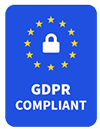
Lack of engagement is one of the highest hurdles for health and safety leaders to jump. Without company-wide engagement, safety issues become the sole responsibility of health and safety teams, who get tied up doing reactive and compliance-based tasks instead of the activities they know will truly improve safety.
There are some questions you can ask yourself to figure out if you’re missing that engagement piece in your health and safety puzzle:
Do processes sit in a dusty folder on a high shelf so that safety systems go unchecked until an audit demands hurried attention, while in the meantime you navigate a maze of under-used communication channels?
Without engagement, even the best health and safety system will gather dust.
Do you find yourself lacking the data to make informed decisions? And are you seeing a dearth of incident reports and safety suggestions from employees?
An unengaged workforce might not see the need for reporting or making suggestions even if they have them, or may not find it simple to do so.
Are you noticing a gaping chasm between safety guidelines and daily lived reality?
If members of the wider workforce aren’t actively involved in the development of guidelines, the results can become dissonant from real workflow.
Does leadership see themselves as exempt from the safety narrative? And do team leaders speak about health and safety as an impediment to operations—an exercise in ticking the boxes—and health and safety leaders as bureaucratic “safety police” rather than an integral part of operations?
An unenthusiastic leadership sets the tone for the rest of the workforce to take safety less seriously.
Are you plodding along with a safety technology built for your organisation 10 years ago rather than your organisation today?
An out-of-date system that doesn’t feel relevant to the current workforce can lead to a lack of willingness or even ability to engage with it.
Do staff see their safety and wellbeing as a priority?
An unengaged safety culture makes staff feel like their workplace doesn’t care, so they become more careless themselves.
Are health and safety incidents seen as the health and safety team's problem solely, without any ownership across the rest of the organisation?
Lack of engagement leads to lack of ownership, and a lack of ownership leads to incorrect behaviour going unchecked until it becomes a big enough problem to bring in the health and safety team to solve retroactively.
Do new safety systems and procedures crawl or fail?
Without engagement being centred within/alongside a new process, even the best system will see poor adoption rates.
A lack of engagement is not a terminal affliction—actually, it’s highly curable! And while safety tech isn’t a magic potion, when mixed well, it can really go a long way.
Behold: The powers of (safety) technology
Health and safety software is uniquely positioned to support your goals in various ways:
- As a centralised hub for the records, plans, and progress of your health and safety efforts.
- As a platform that gives workers the voice to actively contribute to your health and safety goals. This is especially important, as employees who feel their voices are heard are 4.6 times more likely to feel empowered to perform their best work.
- As a channel through which staff can contribute their on-the-ground insights to the lived reality of current health and safety processes.
- As a tool that drives collective responsibility for safety, where everyone sees how they, too, can make the workplace safer for themselves and their colleagues.
- As a living repository of up-to-date safety information, available on mobile and offline, too.
- A strong health and safety software will also be able to support the business case for the implementation of further safety-supporting technologies through beautiful reports that elegantly share a compelling data-backed story with stakeholders.

How to use safety software to boost engagement
Frontline: Make it easy and quick
Frontline workers don’t have a whole lot of time to be faffing about with complicated interfaces and unnecessary steps. You want your safety software to work with them, not against them.
One key way to accomplish this is keep your user interface clean and simple. The average human attention span is now only 8.25 seconds, and it’s hard work to hold it in this flashy fast-paced world. Your chosen tool should have a modern and intuitive interface—think Facebook or Instagram for safety. This will feel familiar, help people focus and make it easy for them to not only log accidents, but be more willing to note suggestions and near-misses as well.
You can also optimise the user experience by configuring your safety software to only present your people with the information that is relevant to their role within your organisation, while a strong permissions framework will help people report unsafe activity or complete their assigned tasks and actions faster.
If you build conditional workflows into your safety forms too, when a person answers a given question, the form updates itself to only ask relevant further questions, rather than taking hours to ask the user every question under the sun.
You should also provide a feedback loop: give the person who submitted the initial report or suggestion visibility over how their contribution has progressed. Being offered a window into the holistic journey makes the process feel less like they’re shouting into a void, and more like they’re making a difference, upping the chances that they will contribute again.
Management: Make it visible
A vocally supportive leadership team lies at the heart of a truly proactive safety culture. Most senior executives understand the importance of sound safety systems and processes—after all, it's their necks on the line should things go wrong—but safety software can help shift their mindset away from pure compliance by highlighting the benefits and ROI that can be driven from a more proactive approach to safety.
It all starts with data. That means that it's so important for you to use your safety software to gather the real-world data that will support management to make their critical contribution to your health and safety system. It’s also important that this data is real-time, so the to-the-minute information is available for decision-makers.
You should be able to configure your safety software to automatically pour all this important information into dashboards that paint a clear picture for leadership of where your health and safety landscape is at.
Visitors, contractors, customers: Make them part of it
Often, the people that make up your business but aren’t permanent employees get left behind when it comes to your health and safety plans and goals. But, legally and ethically, you are responsible for their safety, health, and wellbeing as well.
These people are unlikely to be on your email lists or standing around your water cooler during breaks, so supporting their engagement requires a little extra attention. That’s where your software can come into play.
Get your visitors and contractors to sign in to an integrated Visitor Management software system. The integrated part is crucial! As with their information readily available alongside all your other health and safety data, you can present them with important safety information, such as site-specific hazards and risks, before they set foot beyond the reception area.
- Have your safety software do the heavy lifting when it comes to contractor health and safety administration. Put checks in place that contractor workers meet your pre-qualification criteria and have completed necessary site inductions as they are checking in on arrival and before they get to work.
- Contractors should ideally be given a login to your safety solution. That way you can ensure your shared safety plans are always accessible and they can report unsafe activity as an active participant in your safety programme.
- Give visitors and customers the ability to report unsafe activity via publicly available safety forms. You can set up kiosks or posters with QR codes in visible public spaces, showing your customers that you take health and safety seriously and that their contributions also matter.
- Ensure your safety solution makes it easy for you to share information in the system with external parties as well. Be it an insurance company that needs claims information or a customer that would like a copy of an incident report involving them. You should be able to either share a live link to a public page, or send information in and out of the system by email in a matter of clicks.
How to transform health and safety into an important, organisation-wide responsibility
So once you have the engagement of your frontline workers, management, and everyone else, how do you leverage that engagement to turn health and safety into a priority for not just the health and safety team, but everyone?
Well, one way is to treat health and safety as a team sport, where everyone in the organisation is part of the team, and you’re the captain—on the field, leading the players, supporting them to take advantage of their strengths to deliver real value.
Once you’ve given them the training and encouragement they need, make the system as accessible as possible. This will help ensure that the entire organisation is ready and excited to contribute to health and safety goals. When it comes to safety software, that means:
- Making the system accessible to all workers—so avoiding models that charge per user. Per-user frameworks can lead to frontline staff access cuts to keep costs low, eliminating the possibility of widespread engagement.
- Making the system accessible anywhere—that’s to say, mobile and remote access is a must—and, where possible integrated with your other everyday tools.
- Making the system accessible for any literacy level. Features like voice-to-text input can make a system feel much more inviting for individuals who might struggle with typing or for whom English is a second language.
- Removing logon barriers by incorporating single sign-on functionality. While a government client of ours saw a 125% increase in incidents reported after 1 year, they saw a 190% increase after single sign-on was implemented on top.
- Avoiding bottlenecks with dynamic workflows, where incident reports are sent to team leaders, rather than just the health and safety team, encouraging them to act as the first responders to the incidents that occur in their own teams. With this approach, you can balance the health and safety team’s responsibility while sharing the load more.
- Offering privacy as needed, using confidential workflows so that when sensitive or psychosocial subjects are at hand they are placed with HR or the team otherwise best suited to handling the matter with care.
Elevating the health and safety function
When you leverage your technology to show individuals the value of health and safety, they will be more ready to contribute to it, and you’ll find yourself spending less time doing what others can, and more time on your own contributions.
- Elevate health and safety perceptions by showing the function’s positive contribution, sharing the key ROI stats that you can easily gather with the power of technology—especially those around operational efficiency, employee satisfaction, employer reputation, decreased lost time, and improved compliance.
- Recognise that health means mental health, and psychosocial wellbeing, too—and to incorporate this facet of wellbeing into your system. A sincere transition from compliance to care within a holistic health and safety system will engender a sincere response in turn.
- Take the time to articulate the “why” of your health and safety goals, perhaps in a campaign that runs alongside the implementation of a new safety software or a new element of an existing software. More people will contribute to a system when they understand its purpose and the impact on them. In contrast, “because I said so” will not provoke meaningful, extended engagement.

Final Words
To get the most use out of the software, engagement factors such as the above need to be prioritised during health and safety software selection and implementation. These stages—and the prioritisation of engagement within them—are incredibly crucial. That said, it's never too late to build meaningful engagement and foster a long-term, proactive safety culture throughout your organisation. So why not start today?







